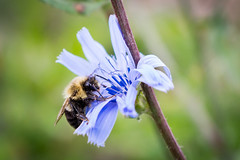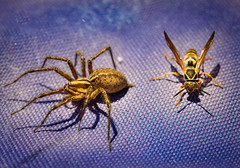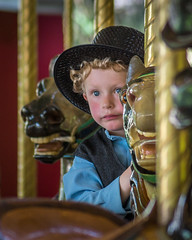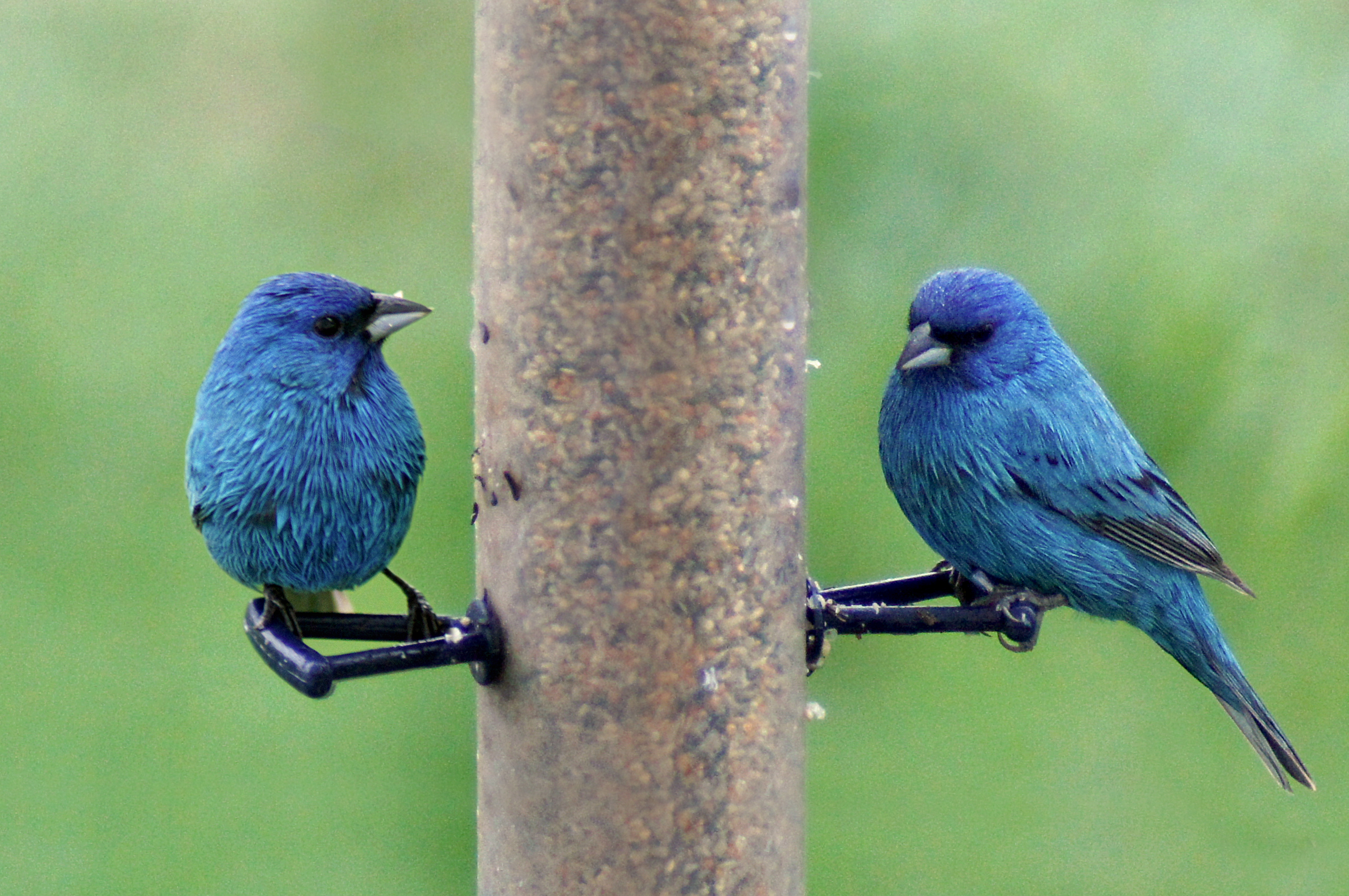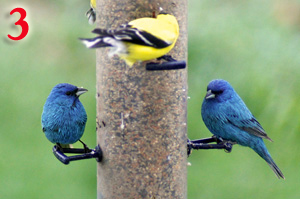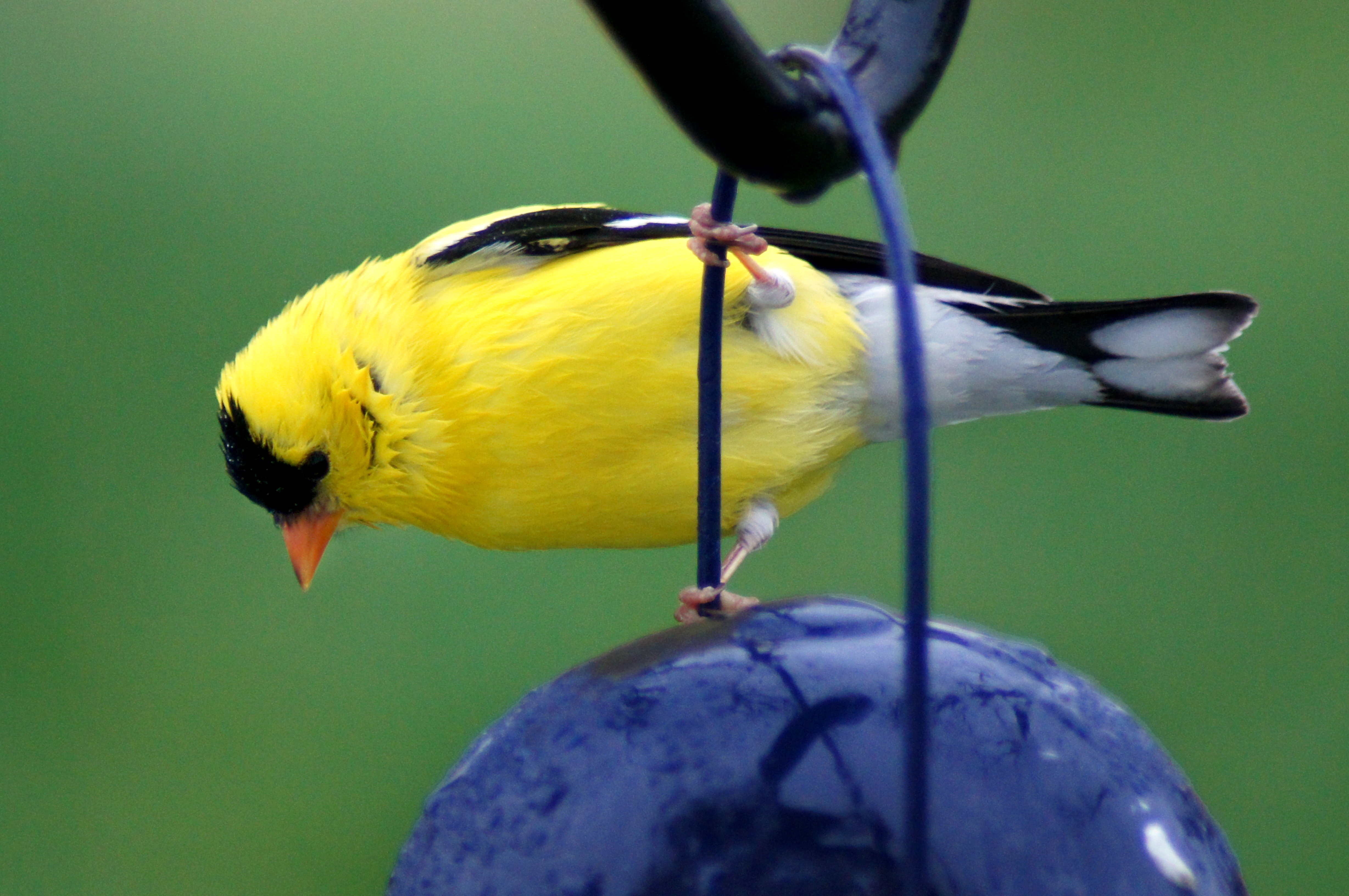Sony SLT-A55
Intense Eater
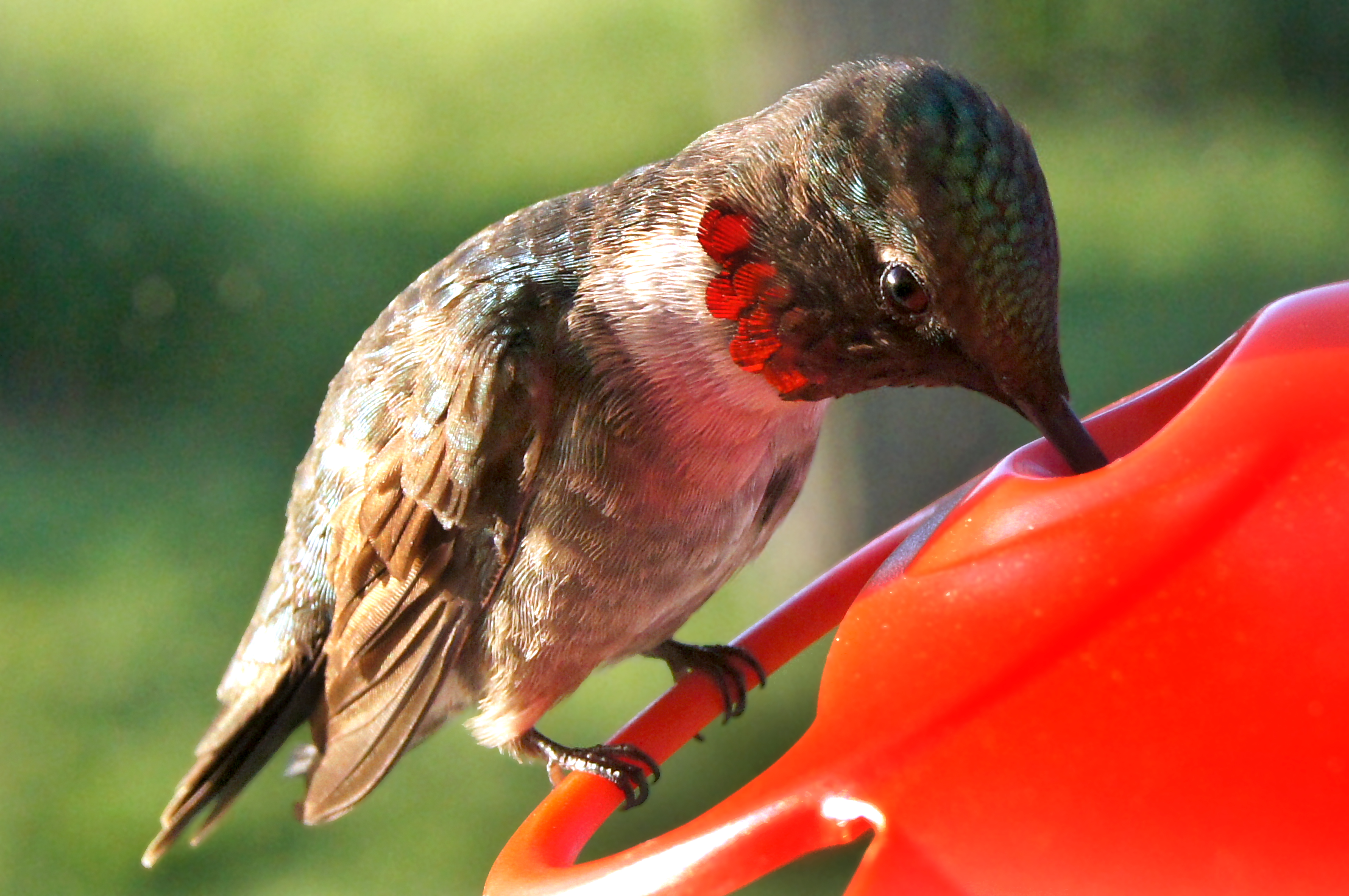
I had a few minutes before I had to shuffle off to work this morning. I decided to sit still by the window and try to grab a good hummingbird photo or two.
This is a male ruby-throated hummingbird intent on downing his breakfast. I love the way the low angle of the sun strikes and highlights the tiny feathers.
This is one of three good images I captured in this 15 minute setting. I’ll post the others soon, so check back.
Feel free to share this image with friends.
(Click the photo to view a larger version.)
The Blues in Double Time
On a dreary, rainy spring morning I was delighted to see four Indigo Buntings flitting around the bird feeders in my yard. I started snapping pictures, hoping to get some good images. I was never able to catch an image of the Indigos together. The birds in this shot are actually the same bird – brought together with the magic of Photoshop.
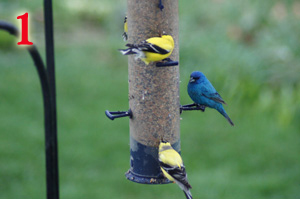 Most times I use Photoshop to tweak my photos – to crop, straighten, correct the color, etc. Some times I use it to create an entirely different image than what I started with. Here’s the basic process for this double Indigo image. Remember, all the Indigos in these images are the same bird, just captured in different locations.
Most times I use Photoshop to tweak my photos – to crop, straighten, correct the color, etc. Some times I use it to create an entirely different image than what I started with. Here’s the basic process for this double Indigo image. Remember, all the Indigos in these images are the same bird, just captured in different locations.
I started with photo 1. I straightened it, enlarged it and cropped it. I also did a little work to clean up some of the white spots of bird poop on the side of the feeder that you don’t notice on the small version but would be ugly when enlarged.
Time to add another Indigo Bunting to the image. I isolated the Indigo Bunting on his perch from photo 2 and copied and pasted it to photo 1. I had to scale the second bird to proper proportions and overlay it over the perch on the opposite side of the first bird. Then I cropped it to the image you see as photo 3.
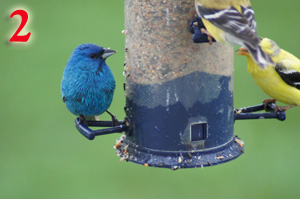
Looking at photo 3, I decided that the Goldfinches were a distraction, so I removed them by cloning parts of the feeder and surrounding background over them.
Things were looking pretty good, but I decided that the image was wider than I really wanted. To change it’s overall proportions I narrowed the feeder, bringing the birds closer together.
After tweaking the contrast and sharpness the project was complete. I hope you like it.
A few days later it dawned on me – I could have created an image with the feeder full of Indigo Buntings. Maybe I’ll work on that when I’m stuck in the house on a cold winter’s day, wishing I could be out photographing birds.
(Click on the main image for a larger view.)
The Flip Side
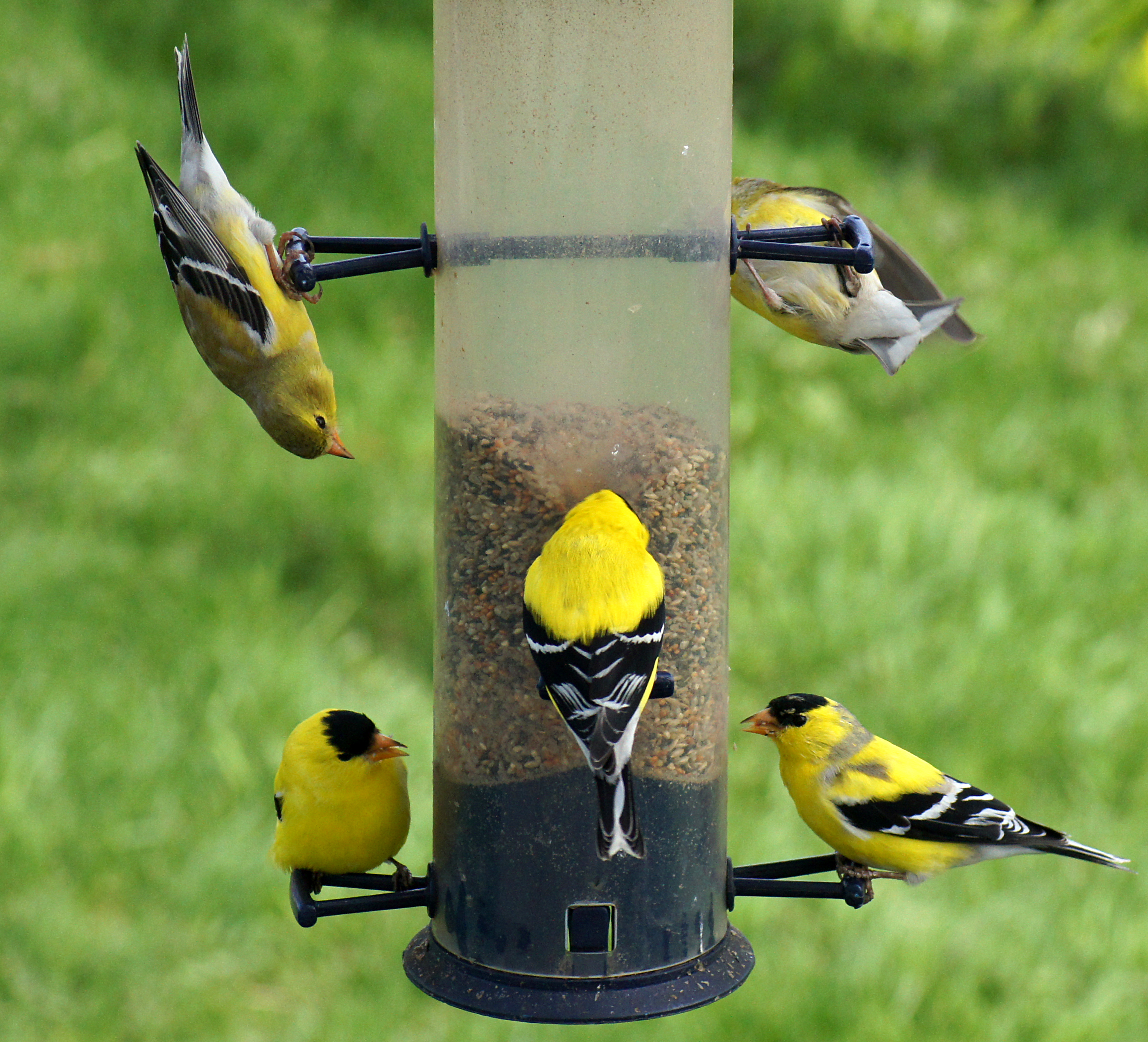
Those acrobatic clowns from our “Flying Circus” never cease to entertain and amaze.
As the seed level drops in the feeders, the level of creativity and persistence among the American Goldfinch community rises.
The zany, upside-down bird makes this an image worth posting, but I also find the white pattern on the wings of the bird in the middle interesting.
(Click the photo to view a larger version.)
Oriole

“I just flew in from Baltimore…and boy are my wings tired!”
We have a few orioles that show up this time of year. They like the oranges we put out. This guy still has a little orange stuck to his beak.
According to Wikipedia.org – – The Baltimore Oriole (Icterus galbula) is a small icterid blackbird that averages 18 cm long and weighs 34 g. This bird received its name from the fact that the male’s colors resemble those on the coat-of-arms of Lord Baltimore.
Adults have a pointed bill and white bars on the wings. The adult male is orange on the underparts, shoulder patch and rump. All of the rest of the male is black. The adult female is yellow-brown on the upper parts with darker wings, and dull orange on the breast and belly.
The Baltimore Oriole’s nest is a tightly woven pouch located on the end of a branch, hanging down on the underside.
Baltimore Orioles forage in trees and shrubs, also making short flights to catch insects. They mainly eat insects, berries and nectar, and are often seen sipping at hummingbird feeders. Oriole feeders contain essentially the same food as hummingbird feeders, but are designed for orioles, and are orange instead of red and have larger perches. Baltimore Orioles are also fond of halved oranges and grape jelly.
(Click the photo to see a larger version.)
Flying Circus
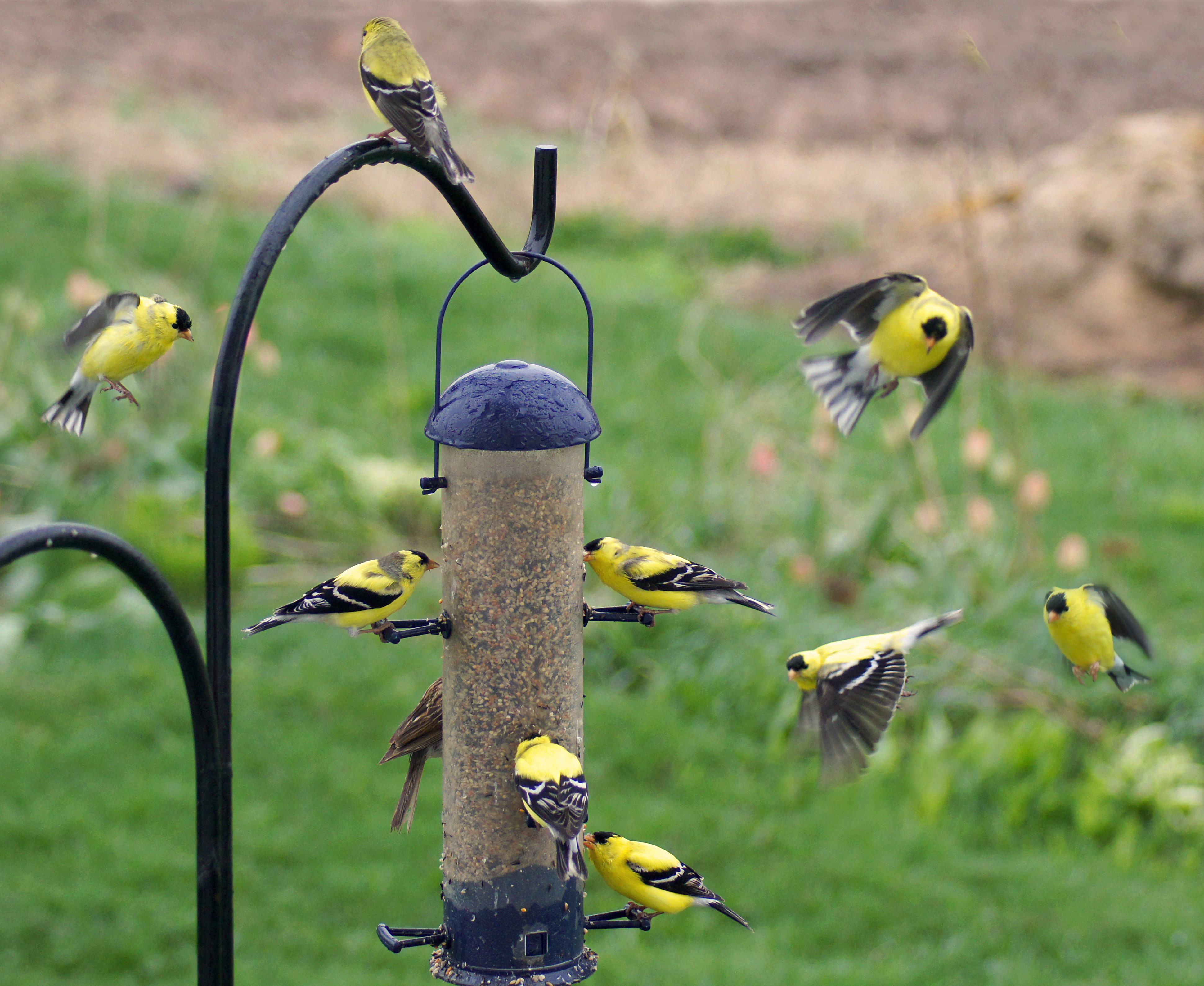 There are times when I look out the window of our rural home and think, “What a circus!” Birds are flying in every direction to take advantage of a free meal from one of our many feeders.
There are times when I look out the window of our rural home and think, “What a circus!” Birds are flying in every direction to take advantage of a free meal from one of our many feeders.
Of all the birds we see, the American Goldfinches are among the most active and consistent performers at our house. It can be quite entertaining to watch them zipping in and out; hither and yon.
When frozen by the camera, the Goldfinch’s quick, bouncy style of flight seems unnatural and awkward.
All of the birds in this photo are American Goldfinches – except the one Chipping Sparrow whose tail can bee seen as he perches on the back side of the feeder.
(Click the image for a larger version.)
Bottom View
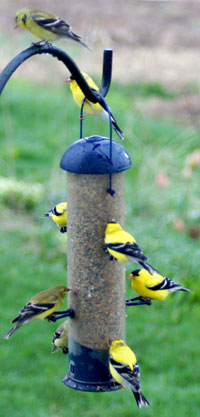 This American Goldfinch (male) was hanging on the top of the finch feeder, waiting for an opening on one of the perches below. As you can see, it’s a popular neighborhood dining spot.
This American Goldfinch (male) was hanging on the top of the finch feeder, waiting for an opening on one of the perches below. As you can see, it’s a popular neighborhood dining spot.
This image was taken on a drab and drizzly day, so you’ll notice his feathers appear a bit damp.
There is no shortage of Goldfinches at our house – year round. (Might have something to do with the food we put out.) It’s nice to see them back in their bright yellow and black plumage for the spring and summer.
(Click on the main image for a larger view.)
Curly Top
Fashion and Friends
Kewaunee’s Premium Blend
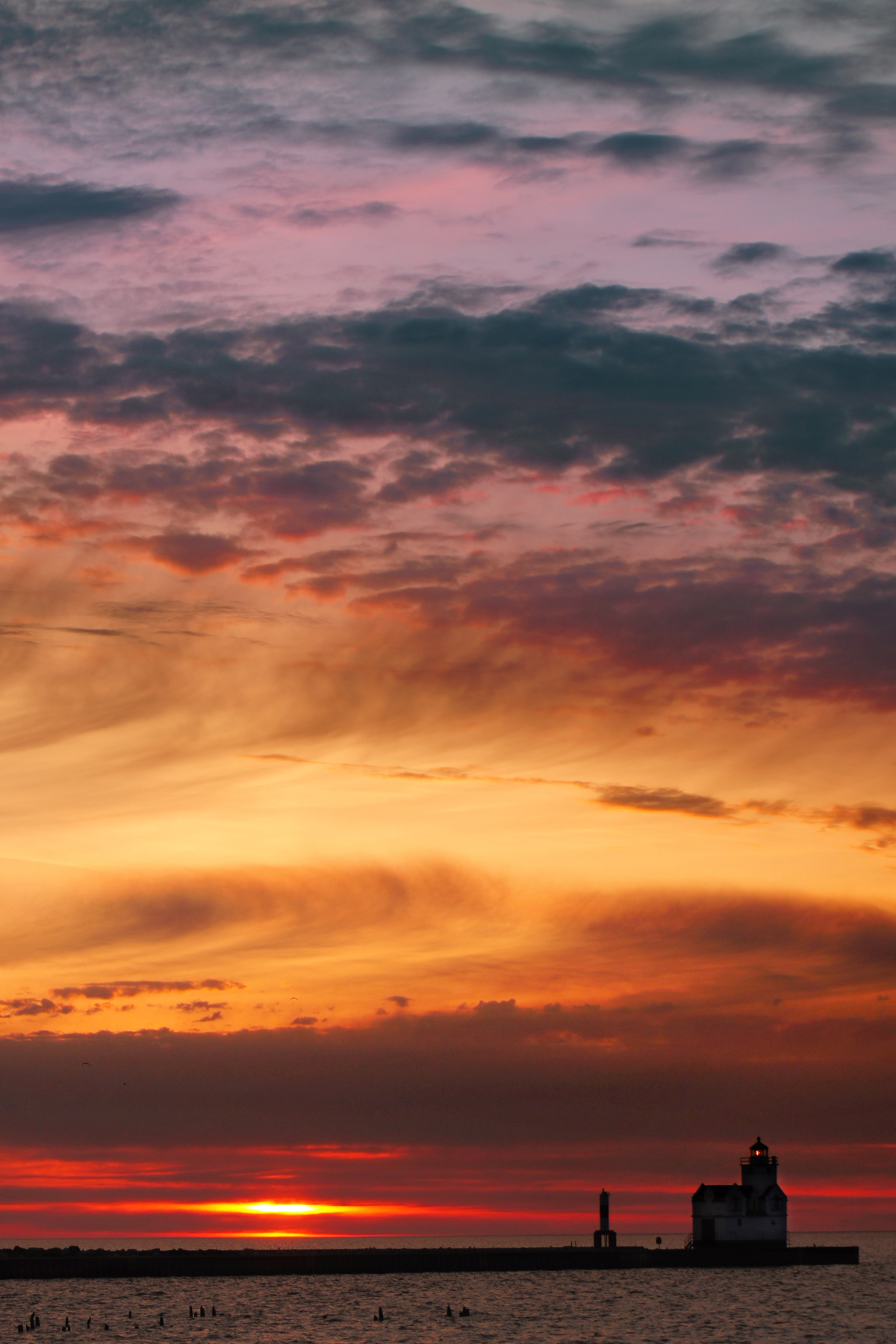 The best part of waking up… The sky provided a blend of beautiful colors, layered from the red of the sun on the horizon to the blue, high in the early morning sky.
The best part of waking up… The sky provided a blend of beautiful colors, layered from the red of the sun on the horizon to the blue, high in the early morning sky.
I made my way to the shore of Lake Michigan – to the Kewaunee, WI beach – to catch a 5:40 am sunrise on the morning of Saturday, April 30, 2011.
It’s interesting to see the different transformations that the sky goes through in the course of a half hour sunrise. For a different look of the same sunrise, see my previous post “Morning Beam.”
(Click the photo for a slightly larger view.)
Morning Beam
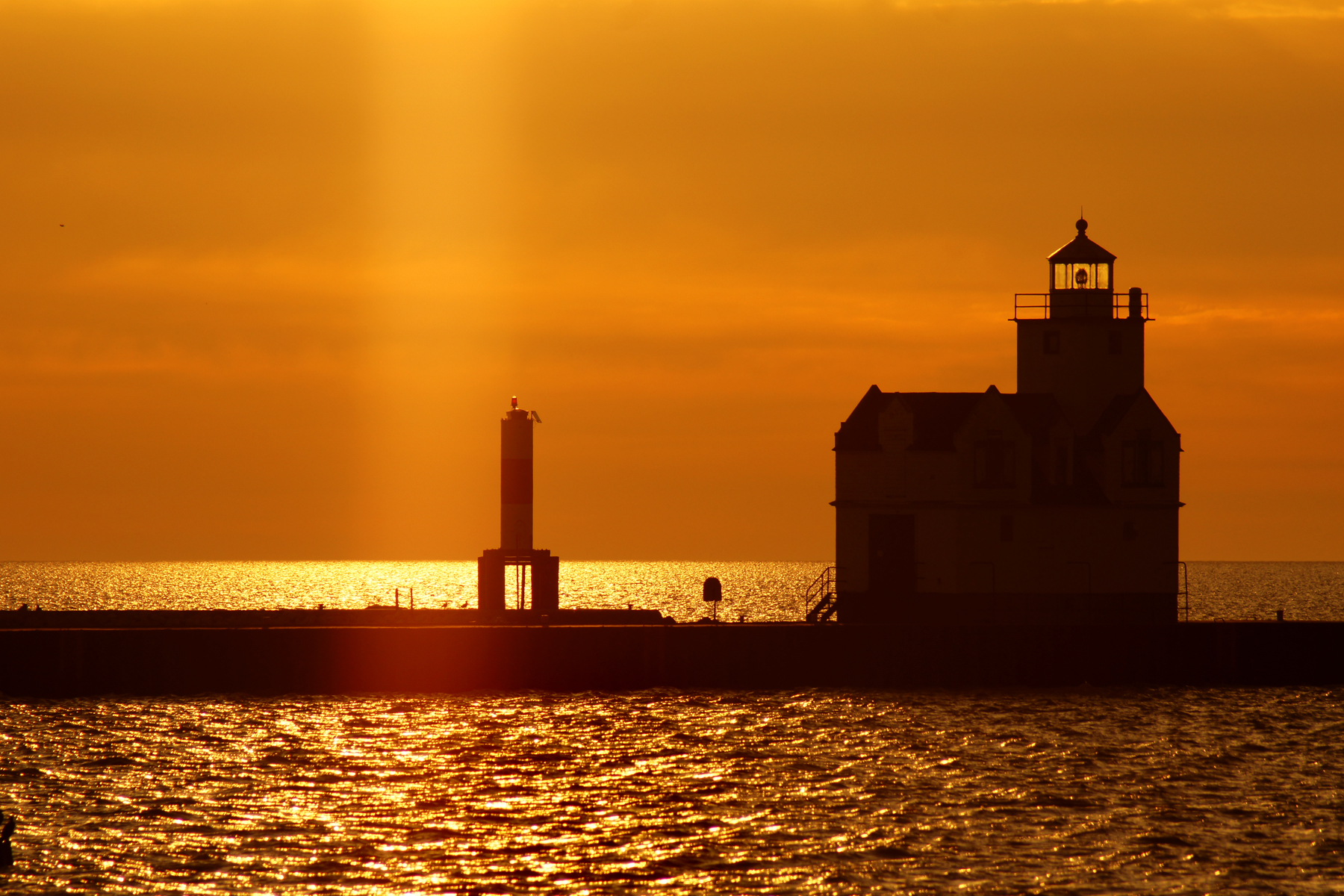
I got up early last Saturday to take sunrise photos of the Kewaunee, WI lighthouse. This is a photo from the end of the shoot. The sun was up enough that it was out of the frame but you can’t miss it’s power by the prominent beam of light.
More from this shoot will be posted in the next few days. Keep checking back or simply subscribe to the RSS feed.
(Click on the image for a larger view.)






